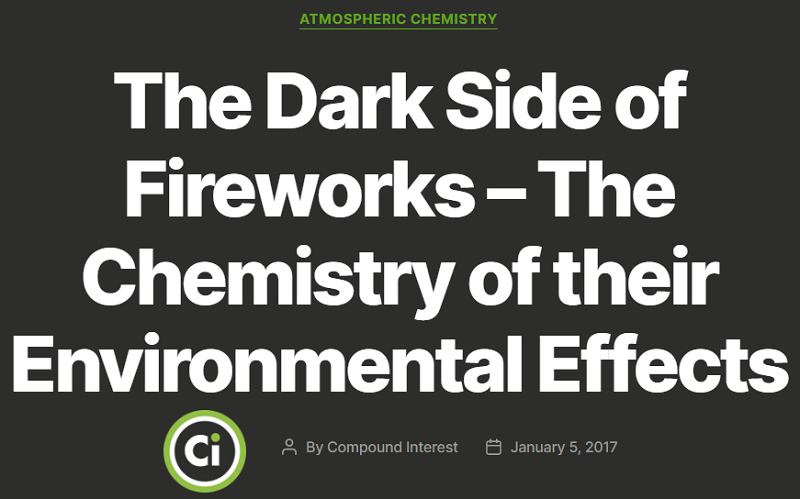Team 3: Light Shows, Not Fireworks
*Click on Links Below:
*Clean Air Saves Lives
*No Idling
*No Wood Smoke
*Transportation
*Stopping Smoking/Vaping
*DIY Air Filter
*Dangers of Methane/Natural Gas
*Air Pollution and Diabetes
*Actions You Can Take
*Bills to Support
Link to Sign On Letter For Light Shows, Not Fireworks. Protect Our Waters from Persistent, Bioaccumulative, and Toxic Chemicals (PBTs)
“…a study in the US found that particulate concentrations increased by up to 370% in the 24 hours after an Independence Day firework display. The particles remain suspended in the air and can be breathed in. This can cause respiratory problems, or exacerbate conditions such as asthma. Long term exposure to particulate matter is associated with respiratory and cardiovascular disease.”
Fireworks start an average of 18,500 fires per year, including 1,300 structure fires, 300 vehicle fires, and 16,900 outside and other fires. These fires caused an average of three deaths, 40 civilian injuries, and an average of $43 million in direct property damage. Click for link
In 2017, U.S. hospital emergency rooms treated an estimated 12,900 people for fireworks related injuries; 54% of those injuries were to the extremities and 36% were to the head. Children younger than 15 years of age accounted for more than one-third (36%) of the estimated 2017 injuries. These injury estimates were obtained or derived from the Consumer Product Safety Commission’s 2015 Fireworks Annual Report
*Click on Links Below:
*Divestment from Fossil Fuels
*No Idling
*Transportation
*Stopping Smoking/Vaping








